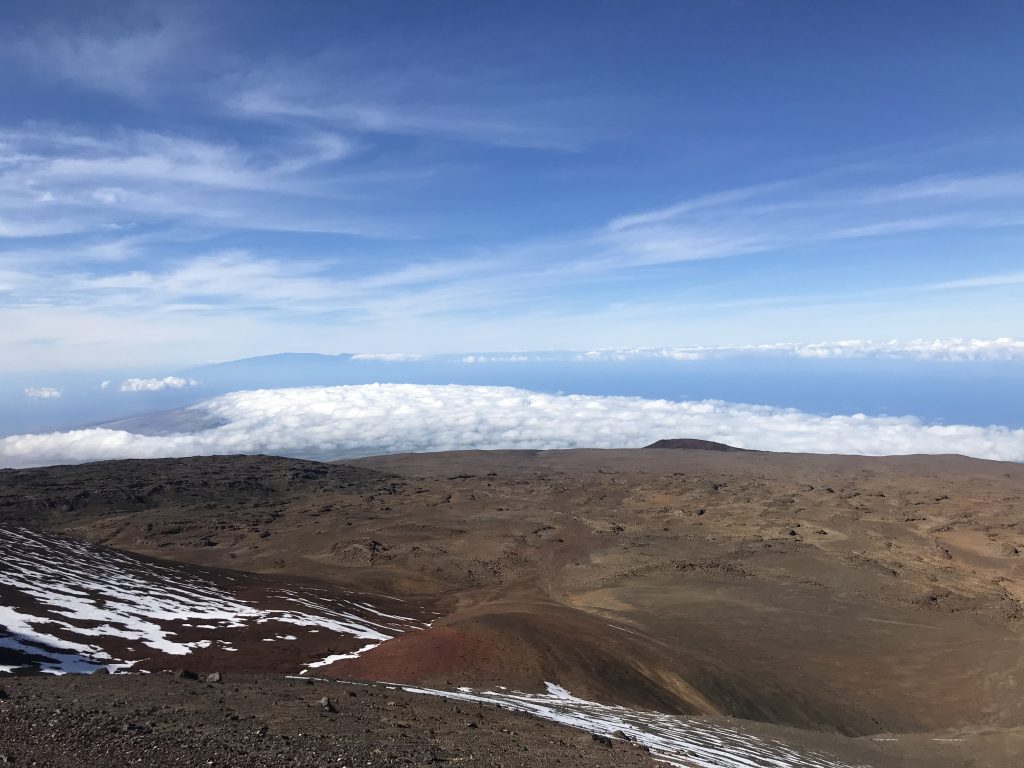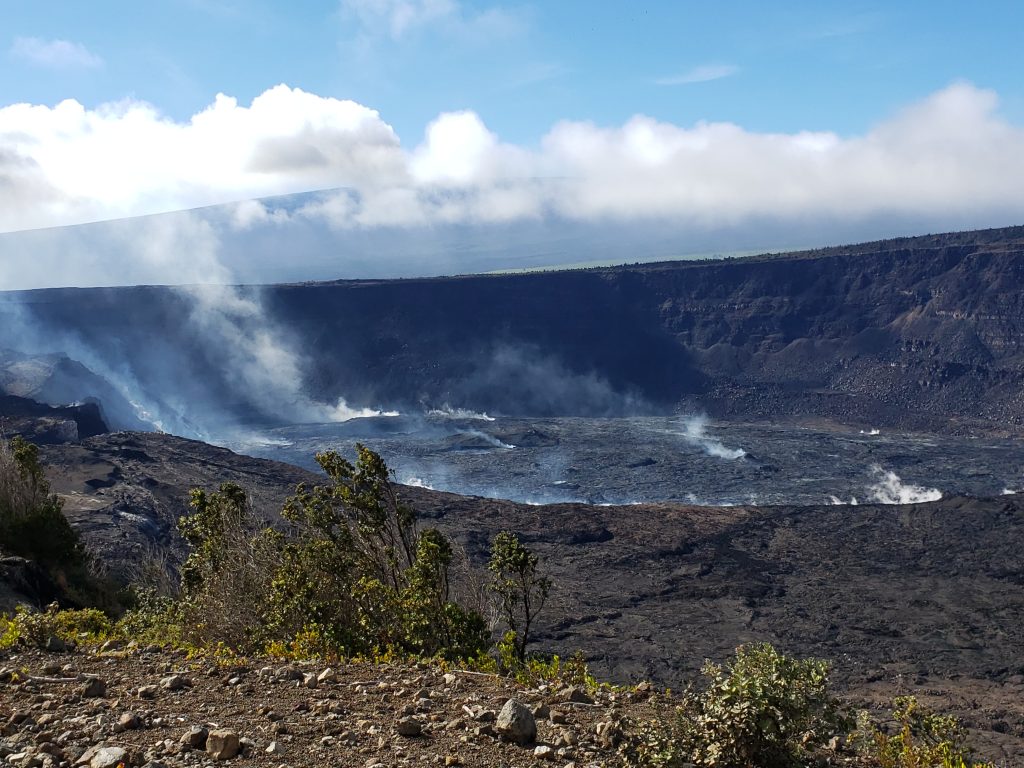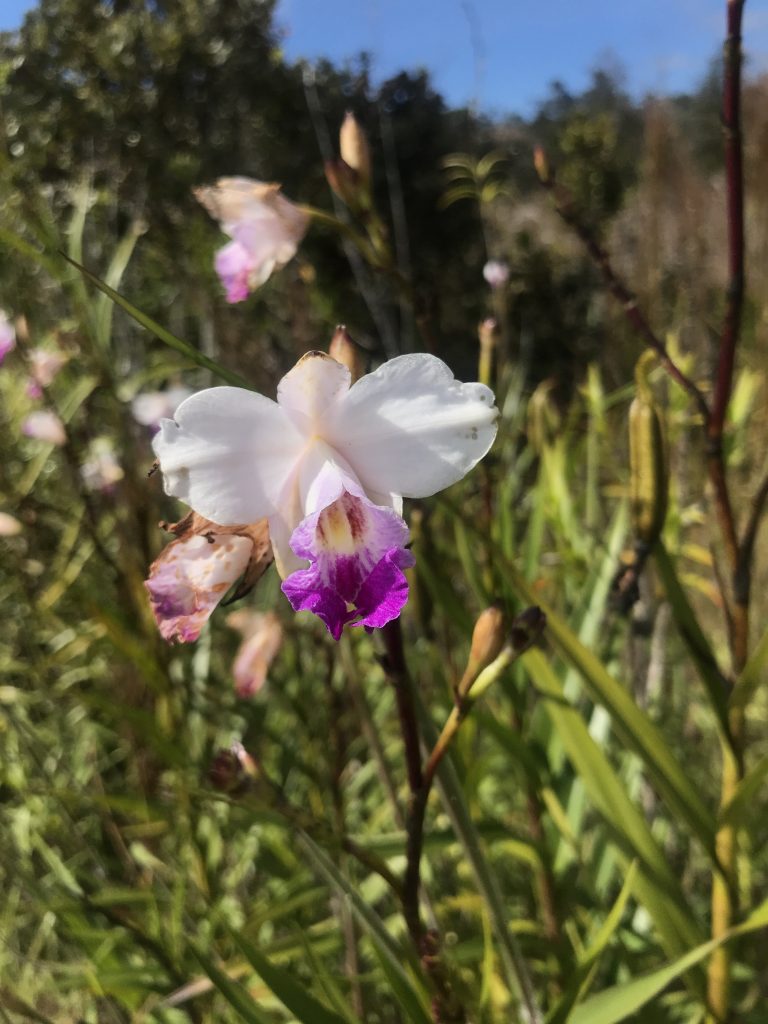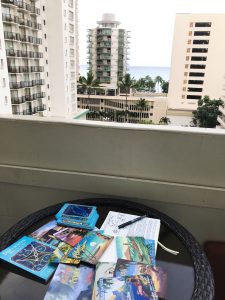At the start of December, I had an opportunity to return to Hawaiʻi. When I visited Australia a few years ago, I experienced profound reverence and communion with nature for the very first time. I came face to face with my own mortality in exposing myself to the immensity of the Earth. Since then, I have been seeking this feeling in my everyday life, and especially when travelling. And so in preparation for my return to the islands, I read and worked extensively with a book by Rima A. Morrell called The Sacred Power of Huna. The intention in reading this was initially to learn more about Hawaiian culture and history. I had seen the islands a few times before through the eyes of a typical tourist and wished for a different experience this time around, one more aligned with my Australian one. WELL, this book called me out on my BS so generously that I completely redesigned my stay based on its content.
With all that has happened health-wise (the stress of fertility treatment that resulted in an ectopic, followed by a bacterial infection the immediate moment I was cleared off by the doctor—that’s an entirely different kind of unpleasantness that I will spare us from), I had wanted a simple, straight-forward getaway. A few days lounging in Waikiki, tanning in the sun, and all that jazz with the all too lofty geospiritual travelling goals out the window. And then I came upon this passage:
Travel used to be (and in some parts of the world still is) a sacred journey, where places were visited to gain sacred inspiration from them. That was known as “going on a pilgrimage” and the inspiration was used by the returning pilgrim to change the quality of daily life at home. Today, however, our society encourages us to see traveling as a complete contrast to our routine, as “getting away from it all” for a couple of weeks (Morrell, 2005, p. 201).
Alright, you got me. I mean, what would be the point of going if I were to return unchanged? As a result, we shifted some flights and rentals around to include a thrilling escapade to the Big Island of Hawaiʻi. And this turned out to be the most significant part of the trip. There were two sites in particular that held a lot of meaning. Mauna Kea, where the goddess of the snows Poliʻahu resides, and Kīlauea, the active volcano and home of Madame Pele. There is something that I felt in these two places that I have not felt elsewhere (or I might have, but did not recognize it as such): a powerful contraction at the heart centre, like someone holding my heart and squeezing it tightly.. At first, I thought this was typical of Mauna Kea. The high altitude often causes dizziness, difficulty breathing, headaches and other such symptoms due to the abrupt change in oxygen levels, but I had this very same feeling when I was exploring the southern flank of the volcano at Puʻuloa where the petroglyphs are located. Is this what it feels like to enter the abode of the goddess? Later, in reading Jean Shinoda Bolen, I recognised the “tuning-fork effect.”


Ascending Mauna Kea
A new earth has come into view as we make our ascent
Wind blowing strong under the stark sun
Grasses and the occasional trees
I hear the call of the goddess beneath the eerie silence
And upon reaching the summit
sights of reds extending into the horizon
Telescopes and satellites like the site of an alien landing
Wind howling stronger, the goddess has awakened
Headache, heart palpitations, shortness of breath
the sacrifices that Poliʻahu demands
Inhale, exhale
Fear, the unknown is here
At a different time, in following the footsteps of Morrell, I came to Kīlauea with a specific intention: to drive down the Chain of Craters Road all the way to the ocean in order to see and touch the pāhoehoe, the power of creation made manifest! Pāhoehoe is a type of lava that is long and ropy; its shape reminds me of maple syrup congealed in layers. This is what is considered new land as greenery will eventually grow on this surface. As a matter of fact, different lava surfaces of the park are dated according to the volcano’s eruption dates, and we can see vast areas of flourishing flora on them. In the past, I might have thought of volcanos as terrifyingly destructive forces, and they most definitely are. But they are also the very source of creation. Of Kīlauea, Morrell writes:
It’s a fantastic place, but terrifying, just like creation itself, for the outcome is unknown. Whenever we create something, whether it’s a baby, a meal, or a book, we can never be absolutely sure how it’s going to turn out! The unknown can be disorientating… (Morrell, 2005, p. 208).

I’m glad that I chose to include this as part of the trip. I think I really needed to experience the destructive force of creation in person in order to realise how absolutely normal (almost banal) it is to feel terrified about creating a baby. Because even though I fully boarded the fertility treatment train, I did question myself more than once. But how can you not be in awe at what comes next? See the wonder of those beautiful orchids? (They’re not native, btw.)
In visiting the volcano, I also remembered all the anger that I haven’t processed. There are some beautiful passages on anger in Morrell’s book that I really resonated with, one of which is this idea that anger helps to destroy old lands. That is the force of Pele in fury, essentially.
In fact, one of the most important questions that emerged from this sacred journey was: How do I become a different person? It’s not that I don’t like myself, but I’m tired of replaying the same thoughts over and over like a broken record. It’s just not interesting, you know? In meditation practices, it is sometimes suggested to observe thoughts like clouds passing by, to notice their shape and colour and then to let them go. I would describe my relationship with darker thoughts instead like a sunflower following the beams of Helios. There is a chapter in Morrell’s book on how the Ancient Hawaiians understood the relationship between the three minds, similar to our understanding of the subconscious, conscious, and superconscious. According to these ancestors, this so-called subconscious mind “doesn’t want to change; it loves repeating patterns… [Therefore] affirmations such as ‘I am good enough’ don’t work if our subconscious sabotages them by saying: ‘I’m not good enough, really.’ ” (Morrell, 2005, p. 98). Hmm… I feel tickled.
The decks that I worked with were the Saltwater Reading Cards and a collection of postcards that I purchased locally, onto which I wrote passages from Morell’s book and my own musings.
Prior to coming here, I also read with seashells and Michelle Hanson’s Ocean Oracle. I own the French version, which is still in print (published by le Souffle d’Or under the name Paroles de coquillages).
Something else that I was inspired to do was purchase two keychains and add them to my small collection of charms.

Featured decks:
Saltwater Reading Cards (Laura Bowen)
Ocean Oracle, French edition (Michelle Hanson)
Postcards from various artists
Book references:
Morrell, Rima A. (2005). The Sacred Power of Huna: Spirituality and Shamanism in Hawaiʻi. Inner Traditions.
Shinoda Bolen, J. (2004). Crossing to Avalon: A Woman’s Midlife Quest for the Sacred Feminine. HarperOne.
